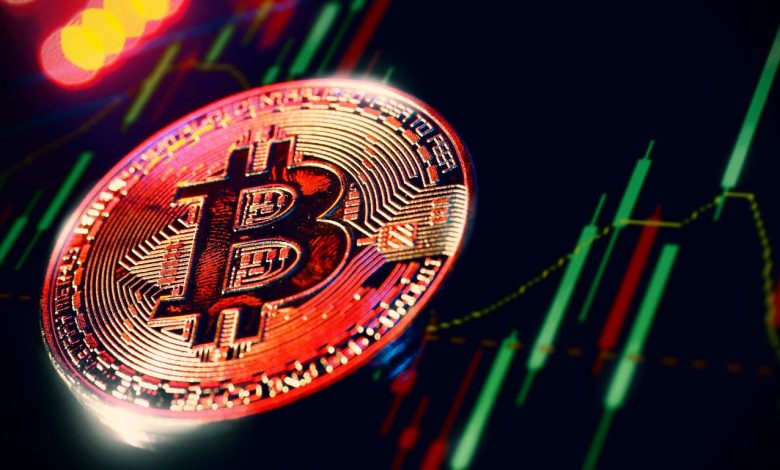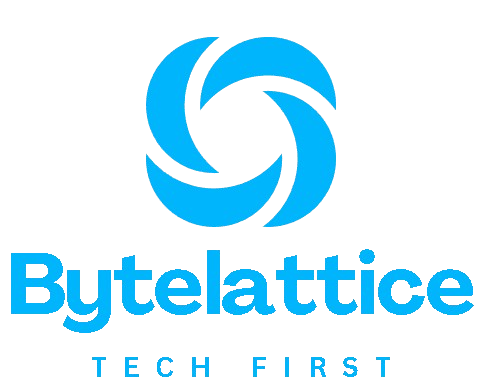
Have you ever wondered how blockchain could transform the way we buy, sell, and trade commodities? This piece covers the power of tokenizing real-world assets on the blockchain. We will discuss liquidity improvements, regulatory and technical hurdles, and supply chain gains.
Next, we examine real-world cases to see how early pilots influenced market dynamics. Then, you will learn about shifting trading practices and where this wave might head. Ready to jump in?
The Role of Tokenization in Commodity Markets
At its core, tokenization turns a physical commodity into a digital asset on a blockchain. It creates a one-to-one link between the real-world good and its digital token. This approach adds a transparent record of ownership that anyone can view.
Put, a barrel of oil can be split into thousands of tokens. Traders can buy tiny slices rather than full barrels. This fractional approach lowers entry hurdles for many market participants.
Digital wallets serve as gateways to this new market. Owners store tokens just like cryptocurrencies. They can transfer tokens across borders with minimal overhead and low fees.
Examining the gold market, Paxos Gold Digital Token proved the concept. It matched each token to a real ounce stored in secure vaults. This model inspired the creation of tokenized bonds and real estate tokens as well.
Industry bodies, such as the London Bullion Market Association, now provide guidelines. They aim to bridge trust between traditional and digital markets. These efforts show tokenization is gaining mainstream credibility.
Increasing Market Liquidity

In traditional commodity markets, liquidity often comes from large participants. Smaller investors may struggle to find counterparties. Tokenization opens thinly traded assets to a broader pool. This shift can reduce price swings caused by low volumes.
Blockchain networks operate continuously without downtime. Markets can run nonstop across time zones. Investors gain the flexibility to trade at their convenience. This continuous operation fuels higher turnover rates.
Fractional ownership allows traders to purchase small stakes in multiple commodities. Funds can diversify into gold, oil, and copper tokens. This spread reduces concentration risk in single markets. Portfolios become more resilient against sector shocks.
Global investors without local brokers can join easily. They connect wallets and meet KYC protocols online. This dynamic cuts barriers for emerging market players. It levels the playing field across regions.
Developers are building on-chain capital markets to facilitate token trading. Platforms like Taurus Asset Tokenization support these efforts. They enable instant settlement and atomic swaps. Trust in clearing houses may fade over time.
Secondary markets can emerge with minimal infrastructure. Anyone can list tokens on decentralized finance (DeFi) exchanges or marketplaces. Liquidity pools automatically match buy and sell orders. These pools adjust prices based on the balance of supply and demand.
Challenges in Tokenizing Commodities
Regulatory Hurdles
Regulators often apply stringent rules to commodities due to market risks. They worry about market manipulation and fraud. Applying blockchain adds new complexity to compliance checks. Clear guidelines are still evolving in many jurisdictions.
Each country has its own laws and licensing standards for commodities. Trading tokens across borders can trigger multiple regulations. Firms must carefully navigate AML and KYC requirements. Compliance errors can result in substantial fines.
Authorities debate whether tokens qualify as securities or commodities. Classification affects which regulator oversees the market. Missteps can create legal uncertainty for issuers. Projects sometimes pause until rules become clearer.
Issuers may need to register with the Commodity Futures Commission. They also require licenses to issue tokenized assets. Registration processes vary across regions like the US, EU, and Asia. This patchwork creates high entry costs for startups.
Central banks are exploring digital currencies but remain cautious. They may restrict the issuance of stablecoins tied to commodity value. This stance limits liquidity options in token markets. Token projects should closely monitor central bank announcements.
Industry bodies, such as the LBMA, issue voluntary standards for gold tokens. They aim to ensure trust and auditability. Embracing these standards can speed regulatory approvals. Companies gain credibility when they comply with best practices.
Technological Barriers
Many public blockchains struggle with high transaction volume. Congestion leads to delays and higher fees. Commodity markets demand fast settlement times. Scaling solutions must strike a balance between speed and security.
Oracles feed real-world commodity prices into smart contracts. Inaccurate data can trigger liquidations or pricing errors. Implementing reliable oracles remains a challenge. Developers work on decentralized Oracle networks to improve trust.
Backing tokens with physical assets requires secure vault audits. Users require proof-of-reserve reports to verify the backing of assets. Audits must be transparent and frequent. Failure to audit properly can erode user confidence.
Storing valuable tokens demands robust wallet solutions. Multi-signature and hardware wallets reduce theft risks. User education is crucial in preventing phishing attacks. Strong key management processes are non-negotiable.
Token standards vary across blockchains, hindering asset transfer. Wrapping and bridging tokens adds complexity and risk. Standardization efforts for ERC-20 and ERC-1401 are helpful. Cross-chain protocols are evolving steadily.
Integrating blockchain with legacy systems poses technical hurdles. Enterprises rely on ERP and supply chain platforms. They need middleware to connect these systems with blockchain. Seamless integration takes time and investment.
Potential Benefits for Supply Chains
More Transparent Supply Chains
Every token transaction is recorded in an immutable ledger, visible to all users. Parties can verify each step in the supply chain. This transparency fosters trust among producers, traders, and auditors. It shifts opacity to openness.
Traceability tracks a commodity from origin to final delivery. Farms, mines, and factories can list details on-chain. Buyers review provenance data before making purchases. This visibility discourages parameter tampering.
Smart contracts trigger alerts when goods change hands or move locations. Logistics partners update token status instantly via IoT devices. Delays and discrepancies become apparent quickly. This speed improves operational efficiency.
Counterfeit certificates and fake deliveries pose significant risks in the commodities market. Tokenized records make it more difficult for malicious actors to falsify data. Auditors can cross-check digital records with physical audits. This dual approach strengthens anti-fraud measures.
Blockchain can record environmental certifications and carbon credits directly on tokens. Consumers can easily choose sustainably sourced commodities. Companies gain incentives to meet green standards. This digital footprint encourages responsible supply chains.
Case Studies and Current Examples
Paxos Gold Digital Token was launched in 2019 as a stable digital asset backed by physical gold. Each token represents one fine troy ounce stored in LBMA-approved vaults. Traders quickly adopted the token on platforms such as Binance and Kraken. This project demonstrated the viability of tangible asset tokens.
Taurus Asset Tokenization supports issuers in Europe and Switzerland. They helped issue tokens for precious metals in 2020. Their platform simplified compliance with KYC and AML rules. Users gained confidence from integrated audit reports.
In 2018, the World Bank issued its first digital bond on a private Ethereum network. They raised $110 million in just hours. Investors used programmable tokens for automated interest payments. This bond paved the way for digital bond issuances globally.
SBI Digital Assets Holding in Japan began gold token pilots in 2021. They partnered with Internet Initiative Japan to test atomic swaps. Results showed faster settlement compared to traditional markets. This success attracted the attention of Asian regulators.
A Swiss refinery tokenized crude oil batches for on-chain trading in 2022. They connected storage facilities via blockchain to track inventory. Traders could buy and sell oil tokens with instant settlement. This innovation boosted market transparency.
Luxury real estate often behaves like a commodity in markets. In 2023, a Manhattan property was fractionalized into tokens. Investors bought shares of rental income and resale gains. The model mirrored commodity tokenization mechanics.
Private equity funds have started tokenizing shares in commodity firms. A mining group issued tokens tied to copper production in 2024. This approach opened investment to smaller backers. It sparked interest in tokenized private markets.
Lessons Learned from Current Implementations
Early pilots highlight the need for clear regulatory roadmaps. Uncertainty often led to project delays or cancellations. Companies should engage with regulators at an early stage in the planning process. This proactive step prevents costly pivots.
Auditing processes must be transparent and verifiable. Independent third parties can publish reserve reports regularly. Automated audits via IoT sensors reduce human error. Investors trust tokens backed by reliable data.
User experience remains critical for adoption. Complex wallet setups and jargon deter mainstream traders. Platforms should offer intuitive interfaces and clear guides. Simplified designs drive broader participation.
Enterprises need seamless integration between blockchain and legacy systems. Middleware solutions accelerate data flow and reporting. This connectivity avoids siloed information across departments. It also reduces manual reconciliation work.
Cost-benefit analyses vary across commodities and volumes. Tokenization incurs additional technical costs but reduces settlement fees. Projects should model ROI under different market conditions. Early adopters show net benefits when volumes exceed thresholds.
Education and community outreach foster trust in token markets. Workshops and tutorials help stakeholders understand the mechanics of on-chain assets. Open-source code and clear documentation build credibility. Diplomacy and communication remain vital.
The Future of Commodity Markets with Blockchain

The coming decade may see the mass adoption of tokenized commodities by major institutions. Asset managers might include tokenized metals and oils in regular portfolios. Central clearing houses may adapt to on-chain settlement. This shift can blend traditional and digital trading.
Blockchain protocols will become more robust and scalable. Layer 2 solutions could handle massive transaction volumes. Developers aim to reduce the energy footprint of networks. Sustainable blockchains might power commodity token ecosystems.
Redefining Trading Practices
Trading desks could execute atomic swaps directly with counterparty tokens. Smart contracts automate trade matching and settlement. This reduces the need for brokers and clearing firms. Trades settle instantly on-chain.
Algorithmic strategies will adapt to tokenized asset pools. Liquidity mining and yield farming extend to commodity tokens. Traders could earn dividends for providing liquidity. This model blurs the lines between finance and decentralized protocols.
Peer-to-peer markets may flourish without centralized intermediaries. Sellers list tokens on open ledgers, and buyers bid directly on them. Price discovery processes gain transparency in order books. Market manipulation becomes harder to conceal.
New derivatives and synthetic products will emerge around tokens. Traders can bet on asset performance with tokenized futures or options. This expands hedging tools for producers and consumers. Sophisticated investors get finely tuned risk controls.
Conclusion
Blockchain-driven tokenization is poised to revolutionize commodity markets in numerous ways. It promises greater liquidity, borderless access, and more transparent supply chains. At the same time, stakeholders must tackle regulatory and technical challenges head-on. Successful pilots already show the potential of this approach.
Firms that embrace tokenization can unlock new capital pools and reduce overhead costs. Transparent on-chain records enhance trust among participants. Meanwhile, dynamic trading practices, such as atomic swaps and DeFi integration, redefine risk management. Investors and regulators alike will need to collaborate to develop scalable frameworks.
As the landscape evolves, staying informed becomes essential. Whether you trade grains, minerals, or metals, preparing for a digital transformation will give you a competitive edge. Keep an eye on industry pilots and emerging standards. The future of commodity markets lies at the intersection of bricks and bytes.
FAQs
What is commodity tokenization?
Commodity tokenization refers to the creation of digital tokens on a blockchain that represent ownership of physical commodities, such as gold, oil, or agricultural goods. Each token links directly to an equivalent real-world asset held in secure reserves.
How can I invest in tokenized commodities?
You can invest through specialized platforms or exchanges that list tokenized assets. After completing the KYC procedures, you can fund your digital wallet using either fiat or cryptocurrency. From there, you purchase tokens like you would shares.
What are the main risks of tokenizing commodities?
Risks include regulatory uncertainty, technology vulnerabilities, and custody issues. Inaccurate audits or oracle failures can undermine trust. Investors should assess the platform’s credibility and proof-of-reserve reports before making a purchase.
Which platforms support commodity tokenization?
Leading platforms include Paxos, Taurus Asset Tokenization, and SBI Digital Assets. DeFi protocols also list commodity tokens on liquidity pools. Each platform varies in audit frequency, network, and asset coverage.
How do regulators view tokenized commodities?
Regulators treat commodity tokens under existing laws for securities or commodities. They require AML/KYC compliance and may be subject to licensing rules. Guidance is evolving, so issuers must stay current with local regulations.
Will tokenization replace traditional commodity markets?
Tokenization will likely complement rather than replace legacy markets. Traditional exchanges and clearinghouses will gradually integrate on-chain mechanics. Hybrid models may offer the best of both worlds for many years to come.
